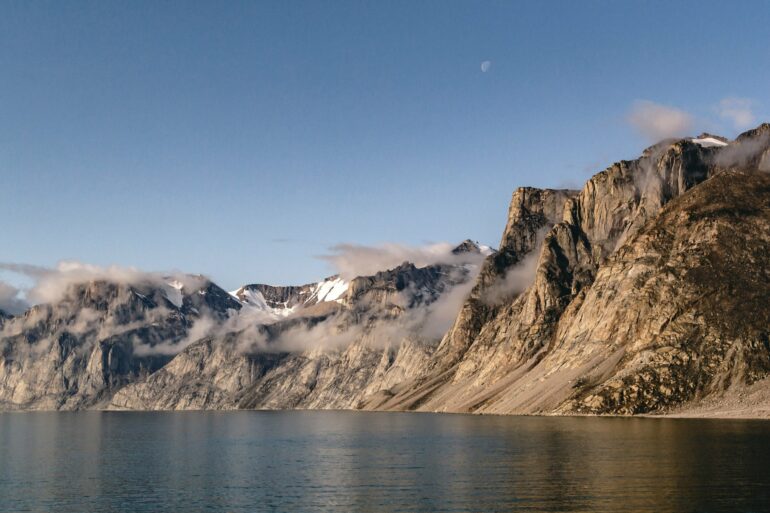Utilizing one of the longest-running ecosystem experiments in the Arctic, a Colorado State University-led team of researchers has developed a better understanding of the interplay among plants, microbes and soil nutrients—findings that offer new insight into how critical carbon deposits may be released from thawing Arctic permafrost.
Estimates suggest that Arctic soils contain nearly twice the amount of carbon that is currently in the atmosphere. As climate change has caused portions of Earth’s northernmost polar regions to thaw, scientists have long been concerned about significant amounts of carbon being released in the form of greenhouse gases, a process fueled by microbes.
Much of the efforts to study and model this scenario have focused specifically on how rising global temperatures will disrupt the carbon currently locked in Arctic soils. But warming is impacting the region in other ways, too, including changing plant productivity, the overall composition of vegetation across the landscape, and the balance of nutrients in the soil. These changes in plant composition will also affect the way carbon is cycled from the soil into the atmosphere, according to a study published this week in the journal Nature Climate Change.
The work was led by Megan Machmuller, a research scientist in CSU’s Soil and Crop Sciences Department.
“Our work focused on pinpointing the mechanisms that are responsible for controlling the fate of carbon in the Arctic,” Machmuller said. “We know temperature plays a large role, but there are also ecosystem shifts that are co-occurring with climate change in this region.”
In particular, Machmuller said, the region is experiencing a kind of “shrub-ification”—an increase in shrub abundance and growth. And what Machmuller and her co-authors found is that over long periods those shrubs may contribute to keeping more carbon in the ground.
“There’s been a lot of focus on the direct effects of warming on soil carbon,” said co-author Laurel Lynch, assistant professor at the University of Idaho, “but what we’re finding with this work is that it’s more complex. We need to think about this ecosystem as a whole community with many interacting parts and competing mechanisms.”
A surprising finding
For the new work, Machmuller and team tested soil samples from a 35-year ecosystem experiment in the Arctic. In 1981, scientists began adding nutrients to test plots at the Arctic Long-Term Ecological Research site in northern Alaska, situated near Toolik Lake at the base of the Brooks Mountain Range. The original idea was to understand how Arctic vegetation would respond to additional nutrients over time, but the experiment has also allowed scientists to examine how long-term changes to the soil can impact carbon storage.
After 20 years, scientists found that there had been a significant loss of soil carbon when nutrients were added compared to the control plots, an important finding that shaped broad scientific understanding of how the Arctic might respond to climate change. Those experiments continued, and Machmuller and her team tested the plots again after 35 years of continuous nutrient application.
Instead of continued carbon loss, however, they found that the trend had reversed. After 35 years, the amount of carbon stored in the test plots had either recovered or exceeded the amount in the nearby control plots.
“We were really surprised by these results and became curious about the underlying mechanism,” Machmuller said.
Machmuller and her team ran advanced isotope tracing experiments in the lab to learn more about how carbon was moving through the system. What they found was that when the nutrients were first added, they stimulated microbial decomposition—a natural process that involves microbes churning through organic matter in the soil that results in the release of carbon dioxide.
But that changed over time, as nutrients were continuously added to the test plots. “Shrubs conditioned the soil in a way that shifted microbial metabolism, slowing rates of decomposition and allowing soil carbon stocks to rebuild,” Lynch said. “We didn’t expect that.”
“This offers a potential biological mechanism that might explain why we observed a net loss of carbon in the first 20 years but not after 35,” Machmuller said.
The importance of looking long-term
These results, Machmuller said, demonstrate that how the Arctic might respond to climate change is more complicated than previously thought. “It’s a complex puzzle,” she said, “and this study has emphasized for us the importance of using long-term studies to advance our understanding of ecosystem processes.”
Gus Shaver, a research scientist who helped set up the initial Toolik Lake experimental plots in 1981 and is a co-author on the study, also stressed the value of doing this kind of work over longer periods of time.
“We’ve shown that long-term experiments offer frequent surprises as we follow the trajectory of their responses over time,” Shaver said. “What you find in the first few years of an experiment is often not what you learn from the 10th or 15th or 35th year.”
Lynch noted that as this ecosystem changes, there are other factors to consider beyond just carbon. Although an increase in shrub abundance could keep more soil carbon from transferring into the atmosphere, other impacts are not as beneficial, she said.
“When you have one plant species that is massively outcompeting the rest of the community, there are major ecosystem implications,” Lynch said. For example, she said, “habitat and food sources for many animals in the Arctic depend on diverse plant communities, and the loss of this diversity can ripple through the entire ecosystem.”
Lauren Gifford, associate director of CSU’s Soil Carbon Solutions Center, who was not involved with the study, said the work highlights the need for more robust and detailed modeling to better anticipate how climate change will impact the carbon stored in the Arctic.
“This is a remarkable 35-year study of one of Earth’s most vulnerable ecosystems,” Gifford said. “Even with comprehensive long-term studies, the impacts of climate change often remain uncertain. Interventions to help adapt to and mitigate climate change may lead to outcomes that are analogous, contradictory, or produce unintended consequences.”
For her part, Machmuller hopes the work will encourage future research on this topic. “Carbon research in the Arctic has been a hot topic for a long time because of the critical role it plays in regulating our global climate,” she said. “But we still don’t have a handle on what exactly the future carbon balance will look like.”
More information:
Arctic soil carbon trajectories shaped by plant–microbe interactions, Nature Climate Change (2024). DOI: 10.1038/s41558-024-02147-3
Provided by
Colorado State University
Citation:
Decades-long research reveals new understanding of how climate change may impact caches of Arctic soil carbon (2024, October 3)



